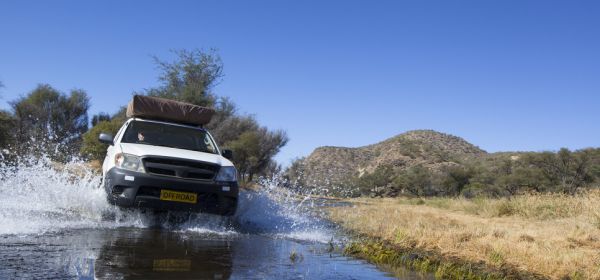Dreaming about driving off into the sunset on your own? Author of The Big Lap, Lee Atkinson, shares her tips for road tripping solo.
Always make sure you can call for help if you need to, and invest in a portable sat nav so you can pinpoint exactly where you are with GPS co-ordinates so whoever it is you’re calling can locate you.
Telstra is the only network that reliably works outside of capital cities but, even so, mobile phone coverage is patchy on most country roads – including Highway 1 – and non-existent in the outback so hire (or buy) a satellite phone.
Some tourist information centres in remote areas have sat phones you can hire, or visit www.satellitehire.com.au; www.rentasatphone.com.au
Spending all day behind the wheel can be not only be lonely, it can be dangerous if you get drowsy or fall asleep. Plan plenty of rest breaks and keep a good library of music handy because you won’t always have radio reception in country areas – talking books and podcasts are great way to keep yourself entertained. And don’t panic if you start talking to yourself in the car (trust me, it’s inevitable) – unless, of course, you find yourself arguing back!
Use commonsense when it comes to choosing where to spend the night. Caravan parks offer a degree of security and safety, as well as mod cons like hot showers, washing machines and convivial company. If you prefer to camp in the bush campgrounds in national parks are a good option as there are usually a few other people around. If you are camping alone in a remote area always make sure you pick a spot well off the road and out of sight. And make sure your sat phone is fully charged just in case you need it.
Trouble-free road tripping
You don’t have to be a bush mechanic to road trip solo, but you should, at the very least, know how to change a tyre. If you’re heading off the black-top, carry a pair of Maxx Trax ramps, which you put under the wheels when you’re stuck in soft sand or mud (which can happen when you least expect it, like pulling off an otherwise well-made dirt road to take a photo!), and a snatch strap so someone else can drag you out if needed. The best way to not get bogged in the first place is to drop tyre pressures to 20psi or less on dirt roads, so you’ll need an accurate pressure gauge and a quality air compressor to re-inflate your tyres before you get back on the bitumen. And don’t even think about leaving home without auto club (NRMA, RACV, RACQ, etc) road service membership, and a satellite phone so you can call them if needed.
For more roadtripping tips see Lee’s book, The Big Lap, available at www.ozyroadtripper.com.au

